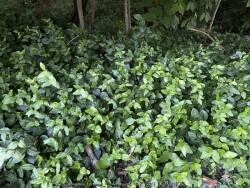

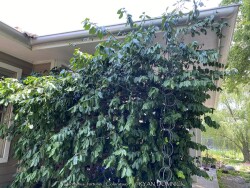
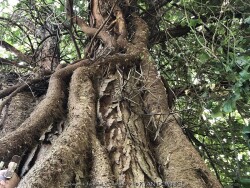
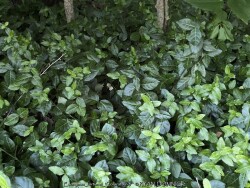
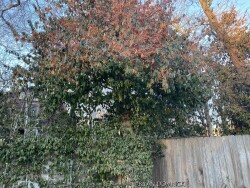
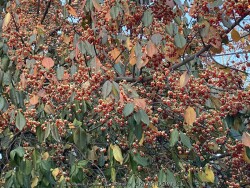

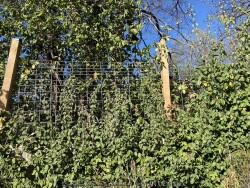
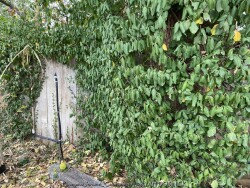
Plant Min Zone: 4a
Plant Max Zone: 9a
Sunlight: Full Sun, Part Sun, Shade, Deep Shade
Water / Rainfall: Low, Average, High
Soil Quality: Poor, Average, Rich
Bloom Season: Insignificant
Flower Color: Insignificant
Berry / Fruit Color: Orangish Red
Spring Foliage Color: Dark Green
Summer Foliage Color: Dark Green
Fall Foliage Color: Purplish Green
Evergreen Foliage: Yes
Winter Interest: Yes
Scented Flowers: No
Drought Tolerance: Medium, High
Wet-Feet Tolerance: Medium
Humidity Tolerance: High
Wind Tolerance: Medium
Poor Soil Tolerance: Clay Soils, Sandy Soils, Rocky Soils, Alkaline Soils (high PH)
Height: 1' - 20'
Width: 2' - 10'
Growth Rate: Slow, Medium
Service Life: Extremely long: over 20 years
Maintenance Need: Medium
Spreading Potential: High
Yearly Trimming Tips: Trim Evergreen Perennial Only if Winter-Kill Occurs.
Plant Grouping Size: Mass Planting of 10 or more
Best Side of House: South Exposure, West Exposure, East Exposure, North Exposure
Extreme Planting Locations: Root-Bound Soils Under Tree, Survives Under Roof Overhang
Ornamental Features: Other Features not listed
Special Landscape Uses: Groundcover, Erosion Control, Noise / Wind Screening
Possible Pest Problems: Deer, Scales
Plant Limitations: Aggressive Rhizomes / Runners, Unwanted Self-seeding, Needs Frequent Pruning / Trimming, Overused in the Landscape, May Be Too Invasive for Garden Use, May be Poisonous
Shippable in 2026: YES
Purple Wintercreeper (Euonymus fortunei 'Coloratus') makes a durable evergreen groundcover that starts off slow, but grows quickly after a few years to forms a dense, weed-smothering mat of foliage. As one of the most dry-shade tolerant plants there is, it's thick leathery leaves seem to handle everything nature has to throw at it! That being said, beware that this is an extremely vigorous plant that crowds out most weeds and is itself weed-like, with a very spreading growth habit. After establishment, it is high maintenance if it has already filled the space and you don't want it to spread any further: it even resists Round-up! It will climb trees if you allow it, generally using it for support to allow its mature form to develop and flowering to occur. From there, red-orange seeds develop that are spread everywhere and will overrun nearby native forests in Eastern Kansas. For the home garden, the species is generally too aggressive to mix with other plants. At our plant nursery, since we cannot eradicate it, we have allowed it to cover a tall fence along the back of our property where it has crept in from the neighboring woods. It does form a nice evergreen screen as it weaves into the trees.